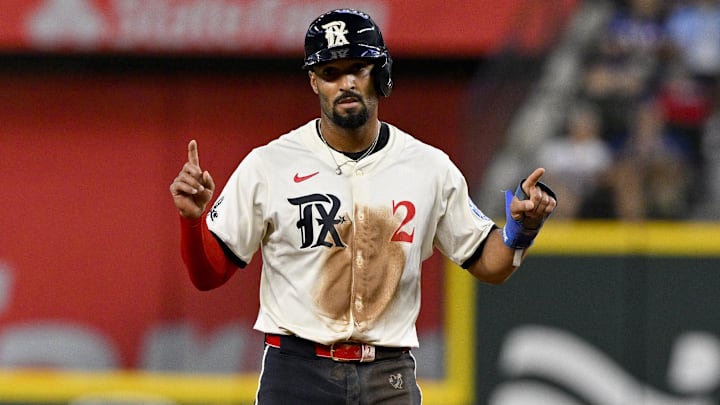Maybe watching both local football teams slog through another Sunday convinced David Stearns that New York deserved at least one roster worth cheering for. The New York Mets answered with a move loud enough to rearrange the entire depth chart, sending Brandon Nimmo to Texas and welcoming Marcus Semien into an infield that suddenly feels redesigned. One decision redrew the blueprint, and a whole lot of players now see the room from a different angle.
A shift this big rarely affects only two names. Roles tilt, responsibilities move, and several Mets now find themselves navigating lanes that look nothing like they did a week ago. The adjustment period hits fast in situations like this, especially for the players whose jobs sit closest to the fault line. Their plans, playing time, and place in the hierarchy all just changed in an instant.
Jeff McNeil’s role takes a major hit
Jeff McNeil entered the offseason expecting another familiar dance between second base and the outfield, a routine he has handled for years, even if second has always felt most like home. That balance shifted the moment Marcus Semien arrived to claim the position outright. With Carson Benge getting a real chance in centerfield and the depth chart tightening around him, he suddenly looks less like a flexible starter and more like a pricey piece without a natural lane.
The performance trends only make the squeeze tighter. McNeil’s 2025 line of .235/.335/.411 with 12 home runs and 54 RBIs in 399 at-bats, three seasons removed from his .300 form, leaves a limited offensive cushion. His barrel rate, hard-hit percentage, and exit velocity have hovered in the bottom twenty percent of MLB for four straight years. His defense remains steady, but not at Semien’s level. He hasn’t fallen off just yet, but the trade pushes him toward a role that no longer fits his contract or his usual workload in Queens.
Brett Baty finally gets a clear path
Brett Baty spent the final two months of the season turning heads instead of turning over his role. From August 1 on, he hit .308/.370/.496 with 7 home runs, 16 RBIs, and 24 runs scored in 133 at-bats while flashing real growth with the glove. Four defensive runs saved at third, plus positive marks at second, had fans picturing another year of rotation between the two spots as the Mets sorted out their infield.
Semien’s arrival ends that conversation. Instead of bouncing around, Baty now has a clear runway to settle into third base full-time, something David Stearns hinted would happen with increased playing time at the position. Locking down second base sharpens Baty’s job description and gives him a singular focus heading into spring training. For a player who finally found rhythm late in the year, that clarity might be the best gift this trade delivered.
Jett Williams faces a tougher road to the majors in 2026
Jett Williams looked like the next prospect ready to crash the conversation. Between Double-A Binghamton and Triple-A Syracuse, he hit .261/.363/.465 with 17 home runs, 52 RBIs, and 34 stolen bases while splitting his time between shortstop, second base, and centerfield. The expectation was simple. After Stearns handed Carson Benge a real chance to win a job out of spring training, many hoped Williams would receive the same type of opportunity.
The Semien trade reshapes that picture. With Semien and Lindor locking down the middle infield and Benge quickly emerging as the centerfield favorite, Williams now faces a blocked road at all three positions he has played in the minors. That leaves two realistic outcomes. He becomes a highly attractive trade chip, or the Mets start mapping out a future for him at a different spot entirely. Either way, his path to Queens just became a lot more complicated.
